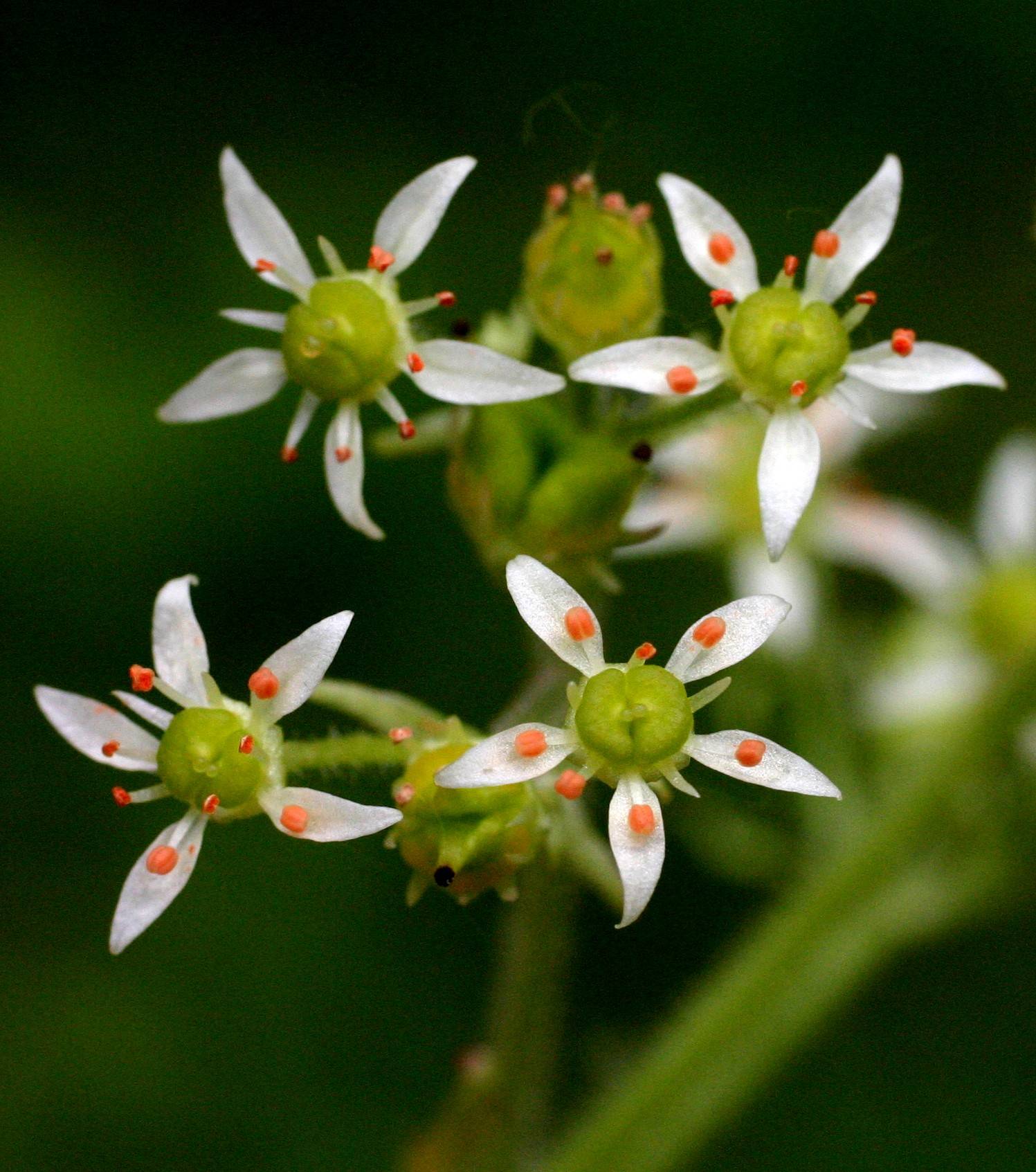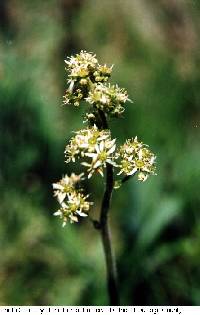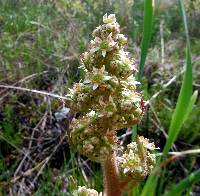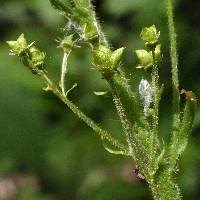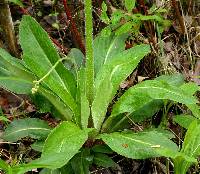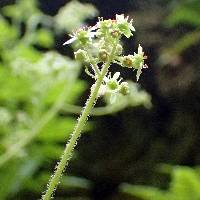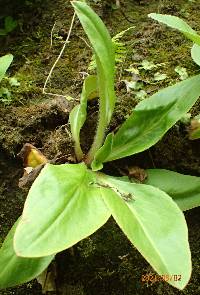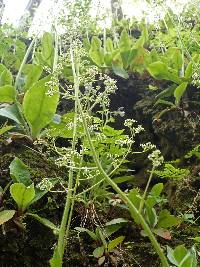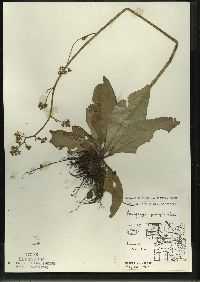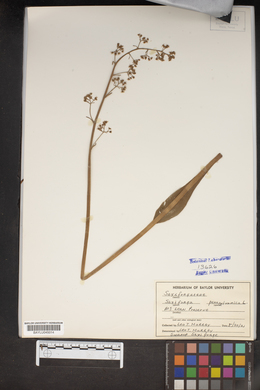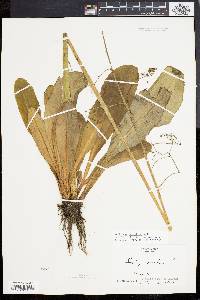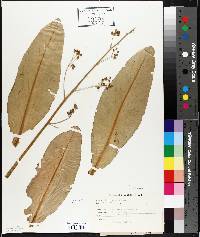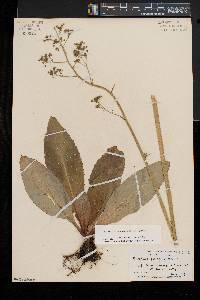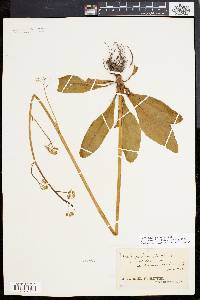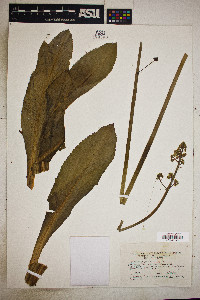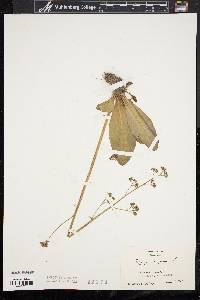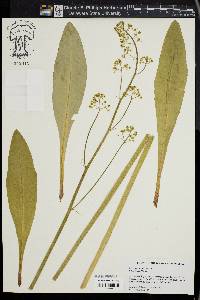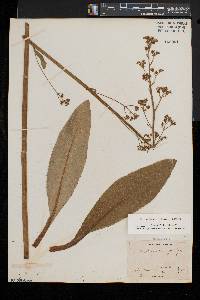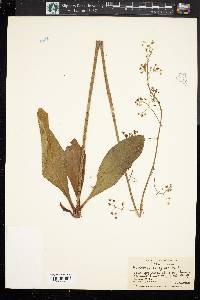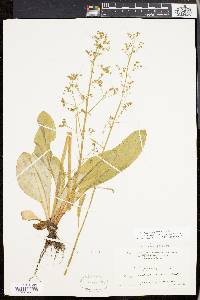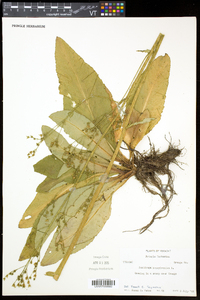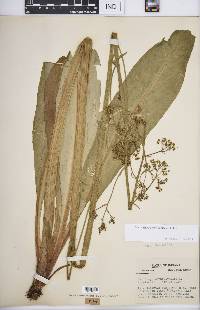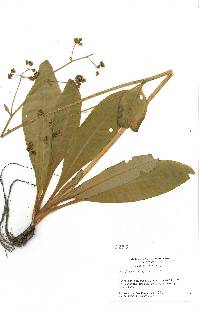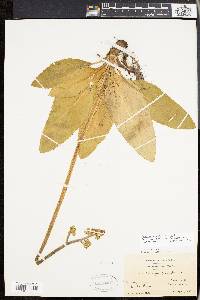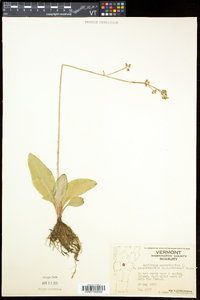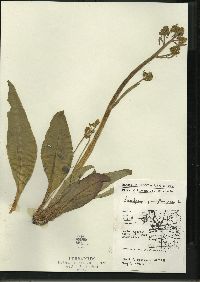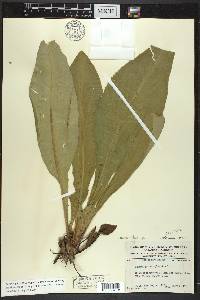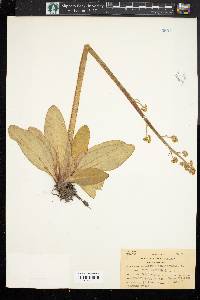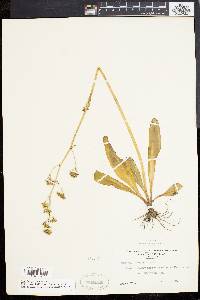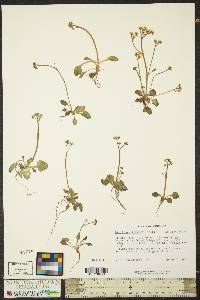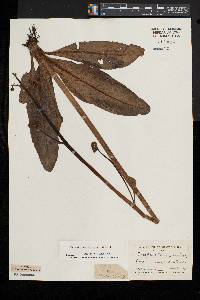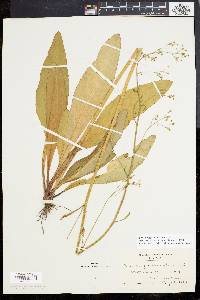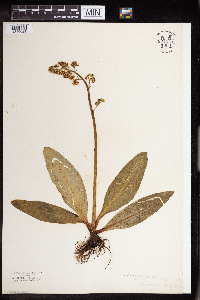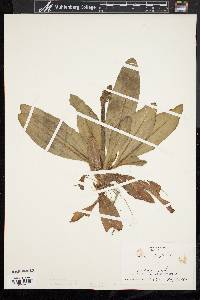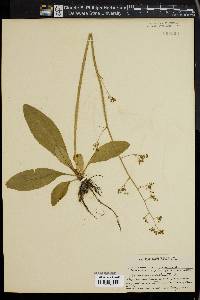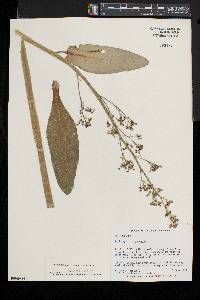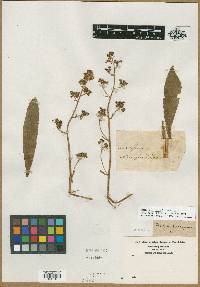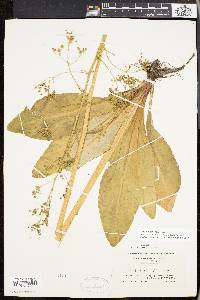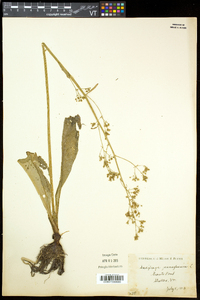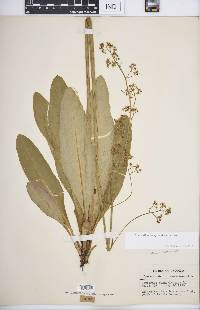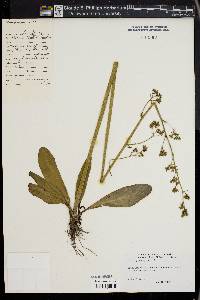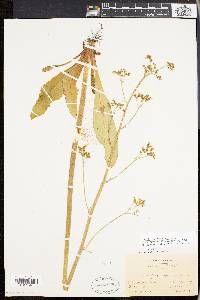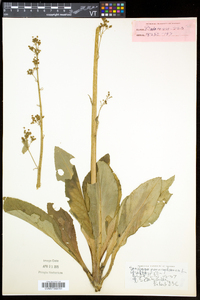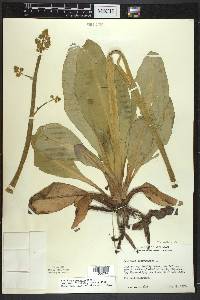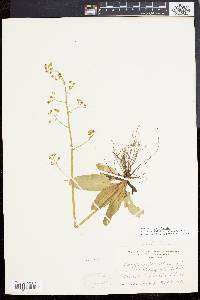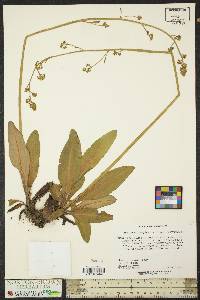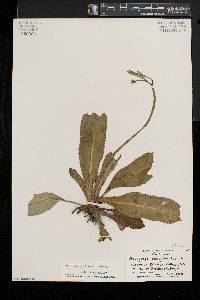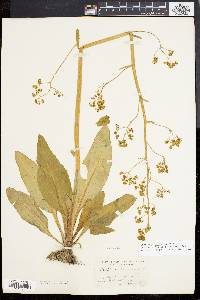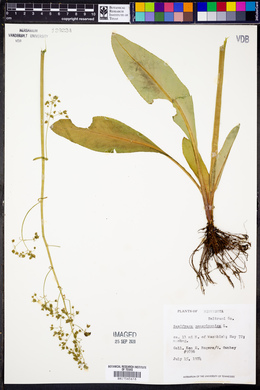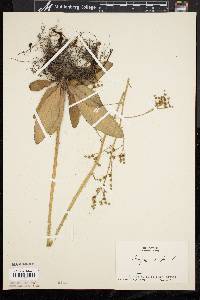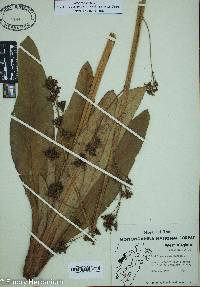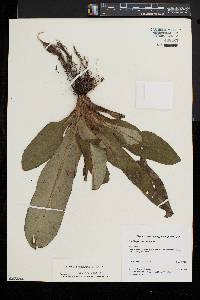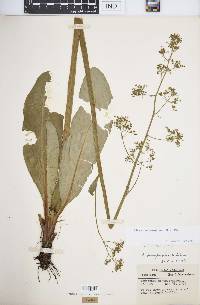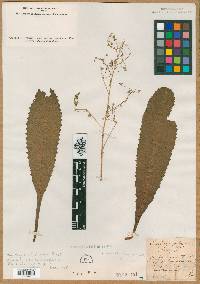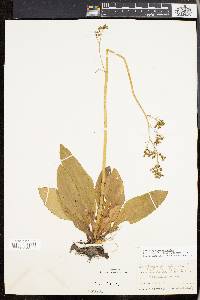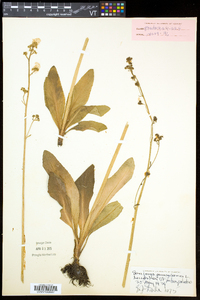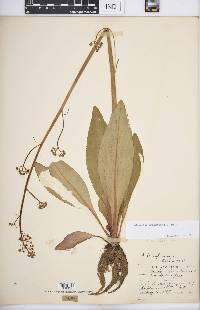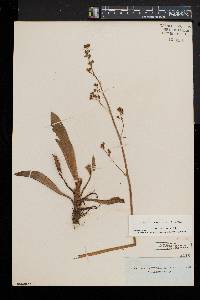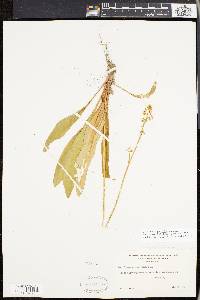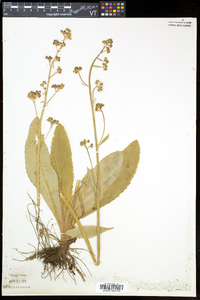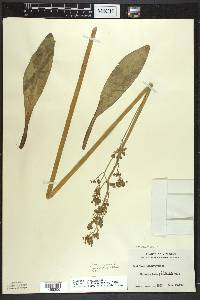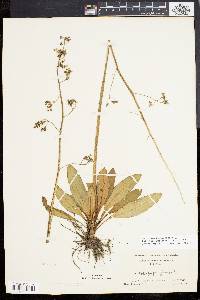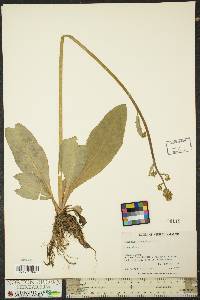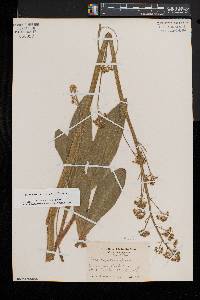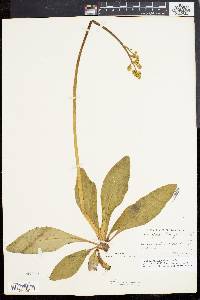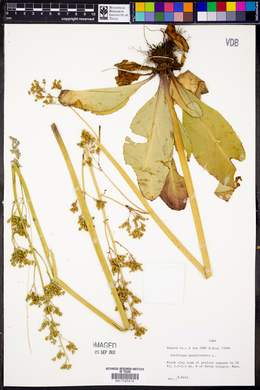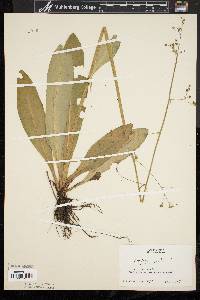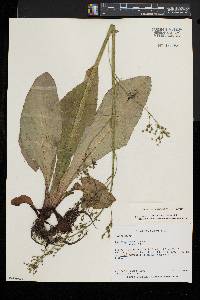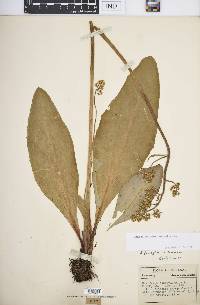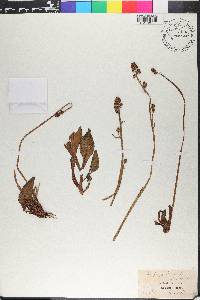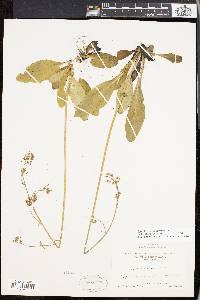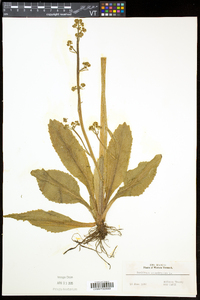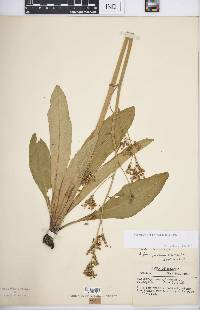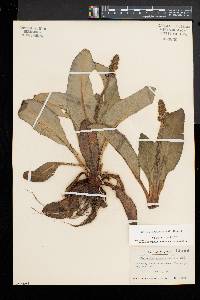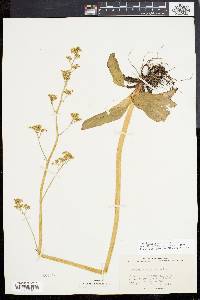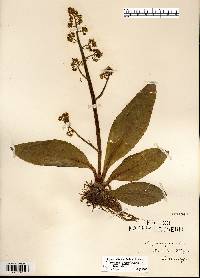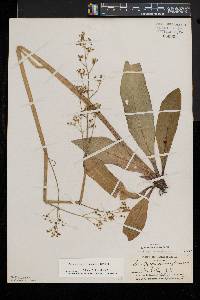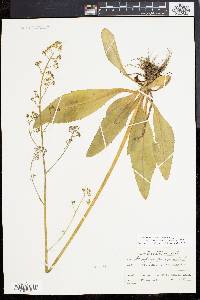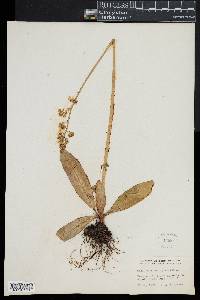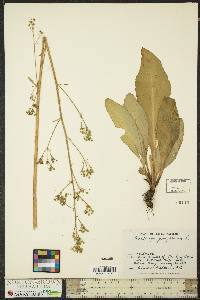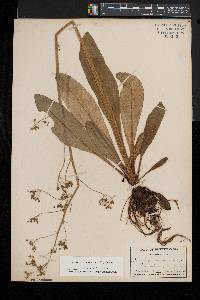Micranthes pensylvanica
|
|
|
|
Family: Saxifragaceae
Eastern Swamp Pseudosaxifrage, more...swamp saxifrage, Pennsylvania saxifrage, marsh saxifrage
[Micranthes forbesii (Vasey) Mohlenbr., moreSaxifraga crassicarpa A. M. Johnson, Saxifraga forbesii Vasey, Saxifraga pennsylvanica , Saxifraga pensylvanica L., Saxifraga pensylvanica f. bracteata G. W. Burns, Saxifraga pensylvanica subsp. interior Burns, Saxifraga pensylvanica subsp. pensylvanica , Saxifraga pensylvanica subsp. tenuirostrata Burns, Saxifraga pensylvanica var. dichotoma Bush, Saxifraga pensylvanica var. hirsuta Bush, Saxifraga pensylvanica var. pensylvanica L., Saxifraga pensylvanica var. purpuripetala (A.M. Johnson) Bush, Saxifraga pensylvanica var. tomentosa Bush, Saxifraga winnebagoensis A. M. Johnson] |
Plants solitary or in groups, with thick, fleshy rhizomes. Leaves basal; petiole indistinct, flattened, 3-10 cm; blade linear or elliptic to ovate, 6-25 cm, fleshy, base attenuate, margins entire or subentire, ciliate, surfaces usually densely short-hairy, often tangled brown-hairy along proximal midveins. Inflorescences (30-)50+-flowered, open, often lax thyrses, 25-125 cm, purple-tipped stipitate-glandular. Flowers: sepals reflexed, triangular to ovate; petals white to cream or rarely purple, not spotted, linear to narrowly elliptic, not clawed or slightly clawed, 2-3 mm, longer than sepals; filaments linear, flattened; pistils connate to 1/2 their lengths; ovary 1/2+ inferior, appearing superior in fruit. Capsules green, folliclelike. 2n = 56, 84, 112. Flowering spring. Marshy meadows, mucky seepages in woods, swamp forests, montane bogs and seeps; 100-1400 m; Man., Ont., Sask.; Conn., Del., Ill., Ind., Iowa, Ky., Maine, Md., Mass., Mich., Minn., Mo., N.H., N.J., N.Y., N.C., Ohio, Pa., R.I., Tenn., Vt., Va., W.Va., Wis. Purple-petalled populations of Micranthes pensylvanica have been known as Saxifraga purpuripetala and are found in Maine, New York, Pennsylvania, and Vermont.
Perennial herb 30 cm - 1.5 m tall Leaves: basal, short-stalked, to 20 cm long, spoon-shaped to oblong or lance-shaped, non-toothed or toothed, slightly hairy, leathery. Flowers: borne on an inflorescence that is compact when young but becoming loose and elongate with age. Each flower has reflexed sepal lobes, greenish white or purple petals (2 - 3 mm long) with one or three veins, and ten stamens. Fruit: dry, inflated, opening along one side (follicle), 3 - 5 mm long. Each cluster of follicles is attached at least to the middle. Flowering stem: erect, somewhat stout, finely grooved, hairy, leafless. Similar species: Parnassia glauca has leaves reaching twice as long as wide, a hairless flowering stem, and solitary flowers with five stamens and a single-chambered ovary. Flowering: early May to late June Habitat and ecology: Local in moist habitats such as calcareous springs, boggy places in the dune area, moist meadows, and upland swamps. Occurence in the Chicago region: native Etymology: Saxifraga comes from the Latin words Saxum meaning rock, and frango meaning "to break." Pensylvanica means "from Pennsylvania." Author: The Morton Arboretum Erect, 3-10 dm; lvs all basal, entire to glandular- denticulate or obscurely serrulate, sparsely hairy, the larger ones 10-20 cm; infl at first compact, later usually lax and elongate; sep soon reflexed; pet greenish-white or purple, 2-3 mm, 1-nerved or 3-nerved, narrowly lanceolate to lance-ovate; body of the follicles erect, connivent at least to the middle, the styles erect or divergent; diploids and polyploids to 14x, based on x=14. Wet meadows and bogs; Me. to Minn., s. to Va. and Mo. May, June. (Micranthes p.; S. forbesii) Gleason, Henry A. & Cronquist, Arthur J. 1991. Manual of vascular plants of northeastern United States and adjacent Canada. lxxv + 910 pp. ©The New York Botanical Garden. All rights reserved. Used by permission. From Flora of Indiana (1940) by Charles C. Deam Infrequent to frequent in wet and springy places in woodland and marshes throughout the state except in the southern counties where its habitat is absent or rare. No doubt it is absent from the southern counties for reasons other than the lack of habitat. .…… Indiana Coefficient of Conservatism: C = 10 Wetland Indicator Status: OBL |
|
|
|

